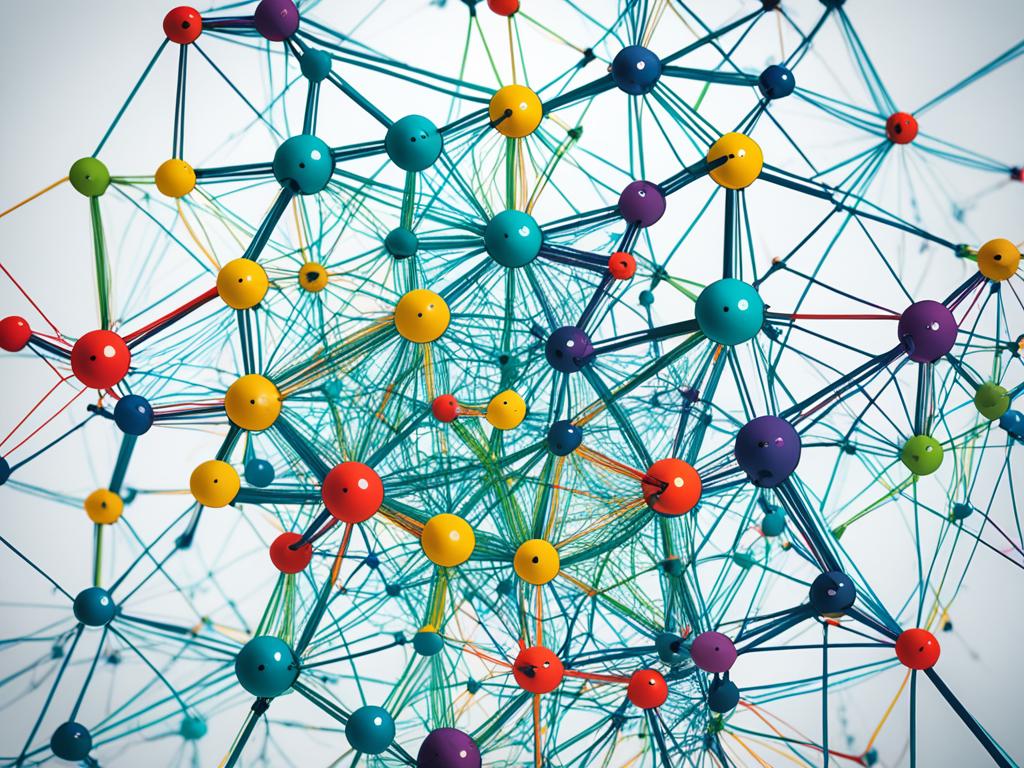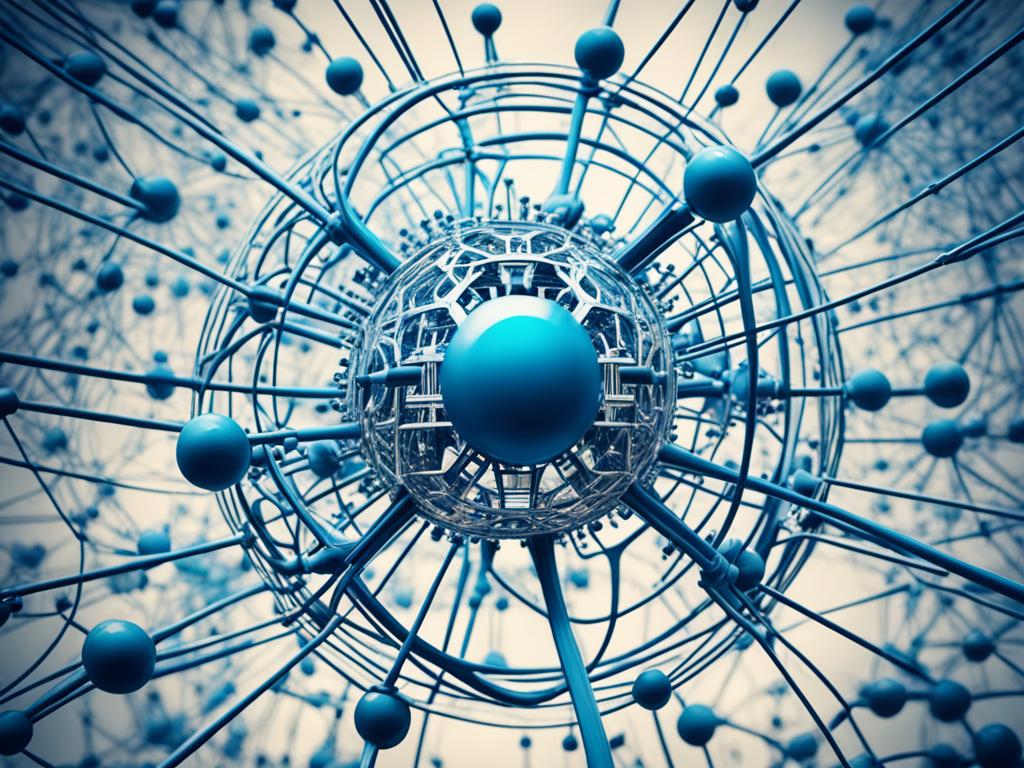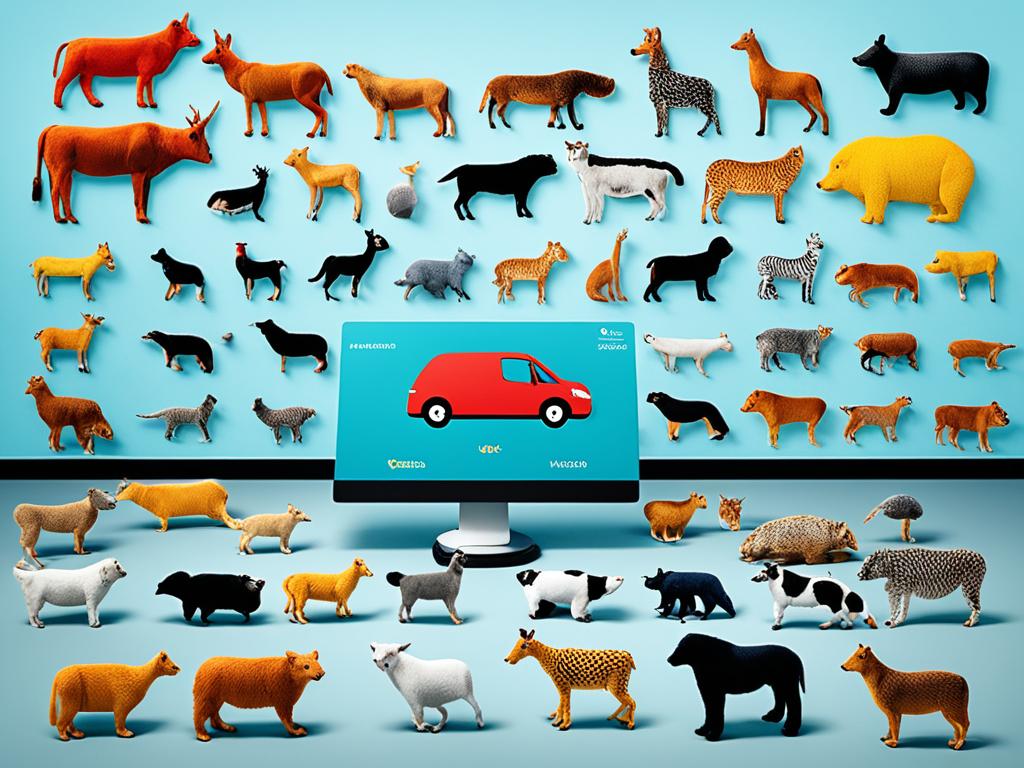
What is Artificial Intelligence (AI)?
Artificial Intelligence (AI) is a fast-growing area that aims to make systems act like humans. It uses algorithms and data to improve many fields. This includes machine learning, neural networks, and more.
AI is changing many areas, like personal assistants and healthcare. It helps with everything from driving cars to making financial decisions.

AI’s main goal is to create systems that think and act like us. It uses advanced algorithms and can handle lots of data. This makes AI change how we see the world.
Defining Artificial Intelligence
Artificial Intelligence (AI) is a fast-growing field. It focuses on making computer systems that can do tasks that usually need human smarts. At its heart, AI is about creating algorithms and models. These help machines act smart, sometimes even better than humans in certain areas.
Understanding the Concept
AI covers many areas like machine learning, neural networks, and more. These technologies let machines learn from data, spot patterns, make choices, and talk like us. They get better over time.
AI vs. Human Intelligence
AI systems are great at some things but are different from human smarts. Humans have a deep, complex intelligence that helps us adapt to many situations. AI is more specialized, focusing on specific problems.
- Humans use our past experiences, feelings, and common sense to judge and solve tough problems.
- AI depends on the data and rules it’s trained with. It’s really good at tasks like recognizing patterns, analyzing data, and making quick decisions.
Looking into how AI and human intelligence are similar and different helps us understand AI better.

Artificial Intelligence
Artificial intelligence is about making computer programs that can do things that humans usually do. These tasks include learning from data, spotting patterns, making choices, and adjusting to new situations. AI systems try to work like our brains do, using machine learning, neural networks, and natural language processing to act smart.
Knowing the basics of artificial intelligence is key in our tech-filled world. AI principles like machine learning and natural language processing help make many new things, from smart assistants to self-driving cars. By learning about the core of AI technology, we see how it changes many industries.
Artificial intelligence is always getting better, and its uses keep growing. It helps with things like predicting the future and making systems work on their own. Looking into the main areas of AI, like machine learning, helps us understand these techs better and their effects on our lives.

Learning the basics and overview of AI technology helps us keep up with AI’s changes. This knowledge lets us see the main AI principles that lead to new ideas and change industries. As we dive into AI’s amazing features, we must also think about ethical issues and how to use these powerful tools right.
Key Branches of Artificial Intelligence(AI)
Artificial Intelligence (AI) is a vast and fast-growing field. It includes several key branches that are pushing forward amazing advancements. Two of the most important branches are machine learning and neural networks.
Machine Learning
Machine learning is about making algorithms that let systems learn and get better on their own. These algorithms look for patterns in data to make predictions and decisions. This is key for many AI uses, like natural language processing and computer vision.
Neural Networks
Neural networks are AI models that mimic the human brain. They have nodes, or “neurons,” that work together to recognize patterns and make predictions. Neural networks are great at tasks like image recognition and speech processing. They also excel in deep learning, solving complex problems with layers of neural networks.
Other important parts of AI include deep learning, ai algorithms, and cognitive computing. Each of these areas is crucial for AI’s growth. They help systems see, learn, and interact in more advanced ways.

Applications of Artificial Intelligence (AI)
Artificial Intelligence (AI) has changed many industries, making our lives and work better. It has two main parts that really stand out: natural language processing (NLP) and computer vision.
Natural Language Processing
NLP lets computers understand, interpret, and create human language. It’s behind chatbots, language translation, and figuring out how people feel. NLP systems talk to users in a way that feels real, giving them help and insights that are just right for them.
Computer Vision
Computer vision is a big part of AI too. It helps systems look at and understand pictures and videos. It’s used in things like facial recognition, spotting objects, and self-driving cars. With smart algorithms and deep learning, computer vision can see, understand, and act on what it sees.
AI has become a big part of our everyday lives. It makes us more productive, improves how we experience things, and changes many industries. As AI keeps getting better, we’ll see even more new ways it changes how we use technology and see the world.

Artificial Intelligence (AI) in Various Industries
Artificial Intelligence (AI) is changing how industries work, bringing new ideas and changing business operations. It’s used in healthcare, finance, transportation, and manufacturing. AI makes things more efficient, personal, and based on data, with a big impact that will keep growing.
In healthcare, AI helps find diseases early. In finance, it improves investment strategies and catches fraud. AI’s ability to help in many ai use cases across sectors is amazing.
The impact of ai on businesses is clear. Companies using AI work better, save money, and make smarter choices. AI gives insights and automates tasks, letting companies focus on big plans and give customers better experiences.
More businesses are using ai in different industries, opening up many chances to use this powerful tech. From predicting in manufacturing to giving personal advice in retail, AI is changing our work and lives.
The future of AI in industries is exciting, promising more efficiency, better customer experiences, and new innovations. As companies explore more ai use cases across sectors, the impact of ai on businesses will be huge and wide.
Ethical Considerations
Artificial Intelligence (AI) is changing fast, bringing up big questions about its ethics. A big worry is how it affects our privacy and data security. AI uses a lot of personal data to work well, making us wonder if it’s used right.
People are talking a lot about how open AI algorithms are and the need for them to respect our rights. It’s important to find a balance between AI’s benefits and protecting our privacy and security. This is a big challenge as AI becomes more common in our lives and in making decisions.

Privacy and Security Concerns
AI is now part of many parts of our lives, like giving us personalized advice and making decisions for us. This has made people worried about how our personal data might be used. Keeping our data private and secure is crucial as AI gets smarter and more common. We need to work together to make strong rules that protect our rights and use AI’s power for good.
FAQ
What is Artificial Intelligence (AI)?
Artificial Intelligence (AI) is a fast-growing field that aims to make systems act like humans. It uses many techniques like machine learning and natural language processing. AI is changing many areas, from personal assistants to healthcare and finance.
How is AI different from human intelligence?
AI systems are great at some tasks but are different from human smarts. They don’t understand things as deeply as humans do. They focus on doing tasks that humans usually do, like learning and solving problems.
What are the key branches of Artificial Intelligence?
AI has several main branches, each with its own special skills. Machine Learning lets systems learn from experience. Neural Networks mimic the human brain to recognize patterns. Deep Learning and Cognitive Computing are also pushing AI forward.
What are the real-world applications of Artificial Intelligence?
AI is used in many areas, changing how we live and work. It helps computers understand and generate human language, making chatbots and language translation possible. It also lets systems see and understand images and videos, used in things like facial recognition and self-driving cars.
How is AI being used across different industries?
AI is being used in many industries, bringing new ideas and changes. It’s making businesses work better, from healthcare to finance. For example, AI helps find diseases early in healthcare and improves investment strategies in finance.
What are the ethical considerations surrounding AI?
As AI gets better, we face big ethical questions. One big worry is how it affects privacy and data safety. There’s a lot of talk about using AI responsibly and making sure it respects our rights and helps society.



This post has given me a better understanding of the differences between narrow and general AI.